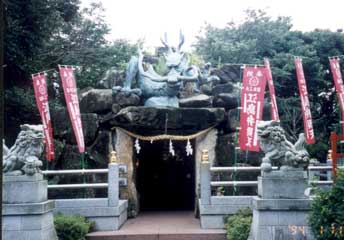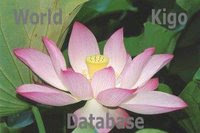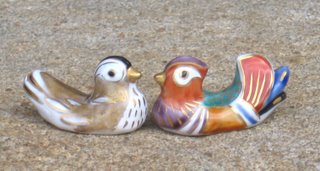[ . BACK to DARUMA Museum TOP . ]
:::::::::::::::::::::::::::::::::::::::::::::::::::::::::::::::::::::::::::::::::::::::::::::::::::::
Ryuuguu jinja 龍宮神社 Ryugu Jinja - Dragon Palace
竜宮神社
There are various shrines with the name Ryugu Jinja in Japan.
The main DARUMA MUSEUM entry is here
. Shrine, Shinto Shrine (jinja) .
. Urashima Taro .
The legend of the Dragon Palace at the bottom of the sea
Ryūgū-jō 竜宮城 Ryuuguu joo
- - - - - and
The Dragon Palace at Enoshima 江ノ島の竜宮
:::::::::::::::::::::::::::::::::::::::::::::::::::::::::::::::::::::::::::::::::::::::::::::::::::::
龍宮神社 Ryugu Shrine Otaru
Hokkaido, Otaru (小樽市)
北海道小樽市稲穂鎮座

Deities in residence
Sokotsu Wadatsumi no Kami 底津和田都美神
Nakatsu Wadatsumi no kami 中津和田都美神
Uwatsu Wadatsumi no Kami 上津和田都美神
The three deities of Wadatsumi (綿津見三神)-
see below
豊受姫命、大物主神、大毘古命、桓武天皇
 quote
quote
The whole land where Otaru City is located was once owned by Takeaki Enomoto 榎本武揚 (1836 - 1908).
He had Ryugu Jinja or Ryugu shrine erected to deify the spirit of Emperor Kanmu 桓武天皇 (737 - 806). Emperor Kanmu had founded Enomoto’s birthplace, the city of Kyoto. In the Ryugu shrine, one can find plates that contain writings of Enomoto and writings of an Imperial prince named Arisgawa nomiya,
The festival is held every year on the summer solstice, June 21.
And more about festivals in Otaru
source : www.int.otaru-uc.ac.jp
:::::::::::::::::::::::::::::::::::::::::::::::::::::::::::::::::::::::::::::::::::::::::::::::::::::::
龍宮神社
Kagoshima, Ibusuki 指宿市
鹿児島県指宿市山川岡児ケ水鎮座
Palace of the Dragon King Shrine in Nagasakibana
 quote
quote
Nagasakibana is a cape which protrudes into the ocean from the southernmost coast of Satsuma Peninsula.
There is an old Japanese folktale about Urashima Tarō travelling on the back of a sea turtle from this cape to the
Dragon King's Palace (Ryūgū Palace) at the bottom of the ocean. Ryūgū Shrine, also in the Ibusuki area, honors the Prince and Princess of the Sea. Considering the legend surrounding this place, it's appropriate that sea turtles also come to lay their eggs here in the summer.

Blue sea and sky, ocean spray, a white lighthouse and the majestic peak of Mount Kaimon: the scenery here is truly picturesque.
source : www.kagoshima-kankou.com
:::::::::::::::::::::::::::::::::::::::::::::::::::::::::::::::::::::::::::::::::::::::::::::::::::::
 Kochi, Muroto Misaki
Kochi, Muroto Misaki 高知県室戸市
Ohana no Ryugu Iwa 「おはなの龍宮巌」 お鼻
Located within a huge boulder at the tip (hana, nose) of Muroto Misaki 室戸岬.
On the first outing of the New Year, local boats come to the sea before this boulder and turn around once in reverence, praying for a good catch during the coming year. The womanfolk hold a celebration in front of the boulder-shrine.
:::::::::::::::::::::::::::::::::::::::::::::::::::::::::::::::::::::::::::::::::::::::::::::::::::::
龍宮神社
滋賀県 Shiga 草津市新浜町
竜宮神社
静岡県 Shizuoka 伊東市静海町
:::::::::::::::::::::::::::::::::::::::::::::::::::::::::::::::::::::::::::::::::::::::::::::::::::::
龍宮も今日の潮路や土用干
ryuuguu mo kyoo no shioji ya doyoo boshi
there is a tide way
to the Dragon palace today -
airing all things
Tr. Gabi Greve
. Dragon Hokku by Matsuo Basho 松尾芭蕉 .
. Matsuo Basho 松尾芭蕉 - Archives of the WKD .
:::::::::::::::::::::::::::::::::::::::::::::::::::::::::::::::::::::::::::::::::::::::::::::::::::::
. . . CLICK here for Photos !
:::::::::::::::::::::::::::::::::::::::::::::::::::::::::::::::::::::::::::::::::::::::::::::::::::::
The three deities of Wadatsumi 綿津見三神
Sokotsu Wadatsumi no Kami 底津和田都美神
Nakatsu Wadatsumi no kami 中津和田都美神
Uwatsu Wadatsumi no Kami 上津和田都美神
- quote
Watatsumi
Watatsumi no ō-kami(Kojiki), Watatsumi no mikoto(Nihongi)
A tutelary of the sea. According to Kojiki, the sea deity Ōwatatsumi no kami was produced by Izanagi and Izanami as part of the process of giving birth to the kami (kamiumi). Both Kojiki and Nihongi record that when Izanagi returned from the underworld land of Yomi and performed ablution (see misogi, harai), three Watatsumi deities were produced, representing the
"upper" (Uwawatatsumi)
"middle" (Nakawatatsumi) and
"bottom" (Sokowatatsumi) parts of the water where he bathed.
The name Watatsumi derives from the words wata-tsu-mochi, literally meaning "holder of the sea," indicating a kami with domain over the ocean.
The Kojiki account also records that Hoori no mikoto (Yamasachi) traveled to the undersea palace of the ocean kami Watatsumi and married Watatsumi's daughter Toyotamabime (Toyotama Hime).
- source : Nakayama Kaoru, Kokugakuin 2005
.......................................................................
- quote
Watasumi or Owatatasumi and
the curious appearance of the crocodile “wani”
Below we explore the possible origins of the triple Japanese Gods of the Sea, the Watasumi Sanjin and associated mythical themes, characters and symbols.
The following text is from the Wikipedia article “Watasumi:
a legendary Japanese dragon and tutelary water deity. In Japanese mythology, Ōwatatsumi kami (大綿津見神, “great deity of water god”) is another name for the sea deity Ryūjin 龍神; and the
Watatsumi Sanjin (綿津見三神, “Three Watatsumi gods”) ruling the upper, middle, and lower seas were created through the divine progenitor Izanagi’s ceremonial purifications after returning from Yomi “the underworld”.
The earliest written sources of Old Japanese diversely transcribe the sea kami 神 “god; deity; spirit” named Watatsumi. The ca. 712 CE Kojiki (tr. William George Aston 1896) writes it semantically as 海神 lit. “sea god”, and transcribes it phonetically with man’yōgana as Wata-tsu-mi 綿津見 lit. “cotton port see” in identifying Ōwatsumi kami and the Watatsumi Sanjin. The ca. 720 CE Nihongi (tr. Basil Hall Chamberlain 1919) also writes Watatsumi as 海神 “sea god”, along with 海童 “sea child” and 少童命 “small child lords” for the Watatsumi Sanjin. In the modern Japanese writing system, the name Watatsumi is usually written either in katakana as ワタツミ or in kanji phonetically 綿津見 or semantically 海神 “sea god”.
Note that in addition to reading 海神 as watatsumi, wata no kami, or unagami in native Japanese kun’yomi pronunciation, it is also read kaijin or kaishin in Sino-Japanese on’yomi (from Chinese haishen 海神 “sea god”). Watatsumi has an alternate pronunciation of Wadatsumi. The original Watatsumi meaning “tutelary deity of the sea” is semantically extended as a synecdoche or metaphor meaning “the sea; the ocean; the main”.
The etymology of the sea god Watatsumi or Wadatsumi is uncertain. Marinus Willern de Visser (1913:137) notes consensus that wata is an Old Japanese word for “sea; ocean” and tsu is a possessive particle, but disagreement whether mi means “snake” or “lord; god”. “It is not impossible” he concludes, “that the old Japanese sea-gods were snakes or dragons.” Compare the Japanese rain god Kuraokami that was similarly described as a giant snake or a dragon. The comparative linguist Paul K. Benedict proposed (1990:236-7) that Japanese wata 海 “sea” derives from Proto-Austronesian *wacal “sea; open sea”.
The Kojiki version of the Japanese creation myth honorifically refers to Watatsumi 海神 with the name Ōwatatsumi kami 大綿津見神 “Great Watatsumi god”. Compare this sea god with mountain god named Ohoyamatsumi 大山積. The world-creating siblings Izanagi and Izanami first give birth to the Japanese islands (kuniumi) and then to the gods (kamiumi ) .
When they had finished giving birth to countries, they began afresh giving birth to Deities. So the name of the Deity they gave birth to was the Deity Great-Male-of-the-Great-Thing; next they gave birth to the Deity Rock-Earth-Prince; next they gave birth to the Deity Rock-Nest-Princess; next they gave birth to the Deity Great-Door-Sun-Youth; next they gave birth to the Deity Heavenly-Blowing-Male; next they gave birth to the Deity Great-House-Prince; next they gave birth to the Deity Youth-of-the-Wind-Breath-the-Great-Male; next they gave birth to the Sea-Deity, whose name is the Deity Great-Ocean-Possessor; next they gave birth to the Deity of the Water-Gates, whose name is the Deity Prince-of-Swift-Autumn; next they gave birth to his younger sister the Deity Princess-of-Swift-Autumn. (tr. Chamberlain 1919:28)
Chamberlain (1919:30) explains mochi 持ち “having; taking; holding; grasping; owning” behind translating Ōwatsumi kami as “Deity Great-Ocean-Possessor”, “The interpretation of mochi, “possessor,” though not absolutely sure, has for it the weight both of authority and of likelihood.”
A subsequent Kojiki passage describes Watatsumi’s daughter Otohime and her human husband Hoori living with the sea god. After Hoori lost his brother Hoderi’s fishhook, he went searching to the bottom of the sea, where he met and married the dragon goddess Otohime. They lived in the sea god’s underwater palace Ryūgū-jō for three years before Hoori became homesick.
So he dwelt in that land for three years. Hereupon His Augustness Fire-Subside thought of what had gone before, and heaved one deep sigh. So Her Augustness Luxuriant-Jewel-Princess, hearing the sigh, informed her father, saying: “Though he has dwelt three years [with us], he had never sighed; but this night he heaved one deep sigh. What may be the cause of it?” The Great Deity her father asked his son-in-law saying: “This morning I heard my daughter speak, saying: ‘Though he has dwelt three years [with us], he had never sighed; but this night he heaved one deep sigh.’ What may the cause be? Moreover what was the cause of thy coming here?” Then [His Augustness Fire-Subside] told the Great Deity exactly how his elder brother had pressed him for the lost fish-hook. Thereupon the Sea-Deity summoned together all the fishes of the sea, great and small, and asked them, saying: “Is there perchance any fish that has taken this fish-hook?” So all the fishes replied: “Lately the tahi has complained of something sticking in its throat preventing it from eating; so it doubtless has taken [the hook].” On the throat of the tahi being thereupon examined, there was the fish-hook [in it]. Being forthwith taken, it was washed and respectfully presented to His Augustness Fire-Subside, whom the Deity Great-Ocean-Possessor then instructed. (tr. Chamberlain 1919:149)
Watatsumi instructs Hoori how to deal with Hoderi, and chooses another mythic Japanese dragon, a wani “crocodile” or “shark”, to transport his daughter and son in law back to land.
Two Nihongi contexts refer to Watatsumi in legends about Emperor Keikō and Emperor Jimmu. First, the army of Emperor Keikō encounters Hashirimizu 馳水 “running waters” crossing from Sagami Province to Kazusa Province. The calamity is attributed to the Watatsumi 海神 “sea god” and placated through human sacrifice.
Next he marched on to Sagami, whence he desired to proceed to Kadzusa. Looking over the sea, he spake with a loud voice, and said: “This is but a little sea: one might even jump over it.” But, when he came to the middle of the sea a storm suddenly arose, and the Prince’s ship was tossed about, so that he could not cross over. At this time there was a concubine in the Prince’s suite, named Oto-tachibana-hime. She was the daughter of Oshiyama no Sukune of the Hodzumi House. She addressed the Prince, saying: “This present uprising of the winds and rushing of the waves, so that the Prince’s ship is like to sink, must be due to the wishes of the God of the Sea. I pray thee let me go into the sea, and so let the person of thy mean handmaiden be given to redeem the life of the Prince’s Augustness.” Having finished speaking, she plunged into the billows. The storm forthwith ceased, and the ship was enabled to reach the shore. Therefore the people of that time called that sea Hashiri-midzu. (tr. Aston 1896:206)
Second, the genealogy of Emperor Jimmu claims descent from the goddess Toyotama-hime, the daughter of Hori and Otohime, who is identified as the daughter of Watatsumi 海童.
The Emperor Kami Yamato Ihare-biko’s personal name was Hiko-hoho-demi. He was the fourth child of Hiko-nagisa-takeu-gaya-fuki-ahezu no Mikoto. His mother’s name was Tamayori-hime, daughter of the Sea-God. From his birth, this Emperor was of clear intelligence and resolute will. (tr. Aston 1896:109-110)
There is uncertainty whether Nihongi scribes wrote tsumi with dō 童 “child; boy” simply for pronunciation or for some semantic significance.
The Three Watasumis: Watatsumi Sanjin
When Izanagi’s sister-wife dies giving birth to the fire god Kagutsuchi, his destroying it creates various deities, including the water dragon Kuraokami. After Izanagi goes to the underworld in a futile attempt to bring Izanami back to life, he returns to the world and undergoes ritual purifications to cleanse himself of hellish filth. He creates 12 deities from his garments and belongings and 14 (including the 3 Watatsumis) from bathing himself.
With the tsu 津 in these three dragon names being read as the genitive particle “of”, they rule different water depths in the sea, soko 底 “bottom; underneath”, naka 中 “middle; center”, and uwa 上 “above; top” (Kojiki) or uwa 表 “surface; top” (Nihongi). Chamberlain (1919:48) notes, “There is the usual doubt as to the signification to be assigned to the syllable tsu in the second, fourth and last of these names. If it really means, not “elder” but “possessor,” we should be obliged to translate by “the Bottom-Possessing-Male,” etc.”
The earlier Kojiki version of the “Three Watatsumi Gods” calls them Wakatsumikami 綿津見神 “Wakatsumi gods”: Sokotsu Watatsumikami 底津, Nakatsu Watatsumikami 中津綿津見神, and Uwatsu Watatsumikami 上津綿津見神.
Thereupon saying: “The water in the upper reach is [too] rapid; the water in the lower reach is [too] sluggish,” he went down and plunged in the middle reach; and, as he washed, there was first born the Wondrous-Deity-of-Eighty-Evils, and next the Wondrous-Deity-of-Great-Evils. These two Deities are the Deities that were born from the filth [he contracted] when he went to that polluted, hideous land. The names of the Deities that were next born to rectify those evils were: the Divine-Rectifying-Wondrous Deity, next the Great-Rectifying-Wondrous-Deity, next the Female-Deity-Idzu. The names of the Deities that were next born, as he bathed at the bottom of the water, were: the Deity Possessor-of-the-Ocean-Bottom, and next His Augustness Elder-Male-of-the-Bottom. The names of the Deities that were born as he bathed in the middle [of the water] were: the Deity Possessor-of-the-Ocean-Middle, and next His Augustness Elder-Male-of-the-Middle. The names of the Deities that were born as he bathed at the top of the water were the Deity Possessor-of-the-Ocean-Surface, and next His Augustness Elder-Male-of-the-Surface. These three Ocean-Possessing Deities are the Deities held in reverence as their ancestral Deities by the Chiefs of Adzumi. So the Chiefs of Adzumi are the descendants of His Augustness Utsushi-hi-gana-saku, a child of these Ocean-Possessing Deities. These three Deities His Augustness Elder-Male-of-the-Bottom, His Augustness Elder-Male-of-the-Middle, and His Augustness Elder-Male-of-the-Surface are the three Great Deities of the Inlet of Sumi. (tr. Chamberlain 1919:45-46)
The later Nihongi version describes the “Three Watatsumi Gods” as Watatsumi Mikoto 少童命 “small child lords”: Sokotsu Watatsumi Mikoto 底津少童命, Nakatsu Watatsumi Mikoto 中津少童命, and Uwatsu Watatsumi Mikoto 表津少童命. These Watatsumis are paired with three O Mikoto 男命 “male lords”.
Moreover, the Deities which were produced by his plunging down and washing in the bottom of the sea were called Soko-tsu-wata-tsu-mi no Mikoto and Sokotsutsu-wo no Mikoto. Moreover, when he plunged and washed in the mid-tide, there were Gods produced who were called Naka I tsu wata-dzu-mi no Mikoto, and next Naka-tsutsu-wo no Mikoto. Moreover, when he washed floating on the surface of the water, Gods were produced, who were called Uha-tsu-wata-dzu-mi no Mikoto and next Uhai-tsutsu-wo no Mikoto. There were in all nine Gods. The Gods Soko-tsutsu-wo no Mikoto, Naka-tsutsu-wo no Mikoto, and Soko-tsutsu-wo no Mikoto are the three great Gods of Suminoye. The Gods Soko-tsu-wata-dzu-mi no Mikoto, Naka-tsu-wata-dzu-mi no Mikoto, and Uha-tsu-wata-dzu-mi no Mikoto are the Gods worshipped by the Muraji of Adzumi. (tr. Aston 1896:27)
Aston notes translations of “Bottom-sea-of-body”, “Middle-sea-god”, and “upper”.
There are numerous Shinto shrines dedicated to the sea god Watatsumi. Some examples include the Ōwatatsumi jinja or Daikai jinja 大海神社 in Sumiyoshi-ku, Osaka (associated with the Sumiyoshi Taisha shrine), the Watatsumi jinja 海神社 in Tarumi-ku, Kobe, and the Watatsumi jinja 綿都美神社 in Kokura Minami-ku, Kitakyūshū.
Given the distribution of crocodiles in the Indian continent-to–ISEA region, it is possible that the Watatsumi deities originated in the ports of the Indo-Sakka region, i.e. North-western coast or Bay of Bengal coastal areas (which would make sense of the reference to the Indian “cotton-ports”, from which came the goods (cotton and silks, stones and jewels) coveted by the Greek and Roman merchants (see Voyage around the Erythaean Sea #56-57 ). The crocodile was the (totemic?) mount of the Indian-Iranian sea deity Varuna or Waruna. It has been said that the myths of Hoori and Hoderi, the Watatsumi sea deities and the Ryugu dragon are Korean in origin (Japanese Myths of Descent from Heaven and Their Korean Parallels), however, this seemingly makes nonsense of the idea of Toyotama-hime’s taking the form of the totem animal of her native land, the crocodile, since crocodiles are obviously non-native to Korea:
“…wani is a fundamental theme in the myth of the demigod brothers Hoori and Hoderi. The sea god Watatsumi or Ryūjin” summoned together all the crocodiles” (tr. Chamberlain 1919:150) and chose one to escort his pregnant daughter Toyotama-hime and her husband Hoori from the Ryūgū-jō palace back to land. Soon after their arrival, the beautiful Toyatama-hime made a bizarre request concerning her shapeshifting into a wani.
Then, when she was about to be delivered, she spoke to her husband [saying]: “Whenever a foreigner is about to be delivered, she takes the shape of her native land to be delivered.” — Wani (Dragon)
However, if we consider that the Korean peninsula’s first king of Kara, King Suro’s marriage to an Indian princess, and that many Indo-Scythian or Indo-Iranian elements are manifested in the tomb culture of Silla, Paekche and Gaya chiefdoms thus evidencing trading contacts with Indo-Iranian (perhaps Indo-Sakka or Indo-Bactrian) culture and alliances with people from the Indian subcontinent, then the mythical themes of crocodiles, naga-like dragons and sea-deities, princesses, and jewels, then the abovementioned tales begin to make a lot of sense.
- source : japanesemythology.wordpress.com
:::::::::::::::::::::::::::::::::::::::::::::::::::::::::::::::::::::::::::::::::::::::::::::::::::::
. Dragon Shrines of Japan .
[ . BACK to WORLDKIGO . TOP . ]
[ . BACK to DARUMA MUSEUM TOP . ]
:::::::::::::::::::::::::::::::::::::::::::::::::::::::::::::::::::::::::::::::::::::::::::::::::::::














































